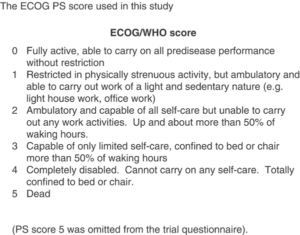Overview of Esotropia Types and Symptoms
Understanding Esotropia: Types, Causes, and Symptoms
Estimated Reading Time: 14 minutes
Esotropia is a condition in which one or both eyes turn inward due to misalignment. It commonly presents in infants and young children, though it may also affect adults. In some cases, it is associated with underlying conditions such as premature birth. While esotropia in infants under 20 months may resolve naturally, more persistent cases may require treatment including corrective glasses, eye patches, or surgery if conservative approaches are ineffective.
This article offers a comprehensive overview of the types of esotropia, their symptoms, possible causes, and available treatment options.
Common Symptoms of Esotropia
The hallmark sign of esotropia is the inward turning of one or both eyes. However, individuals may also experience:
-
Misaligned eye appearance
-
Difficulty coordinating both eyes
-
Head tilting or squinting to see better
-
Eye strain or fatigue
-
Blurred or double vision (diplopia)
-
Reduced depth perception
Classifying Esotropia: Key Types
Several types of esotropia exist, and diagnosis depends on factors such as age of onset, frequency, and cause.
Congenital Esotropia
Also known as infantile esotropia, this type typically develops within the first 6 months of life. Though it’s termed “congenital,” it rarely appears at birth. Its cause remains unknown, but it is relatively common—affecting about 1 in 50 infants. Misalignment seen before 3 months may resolve naturally and should not be confused with congenital esotropia.
Acquired Esotropia
This form of esotropia appears later in life, potentially due to trauma, neurological conditions, or underlying diseases. A specific subtype, acute acquired comitant esotropia (AACE), is marked by sudden onset, double vision, and minimal refractive error. Some cases of AACE have been observed during extended screen time periods, such as during COVID-19 lockdowns.
Constant Esotropia
In constant esotropia, the eye is turned inward at all times. This is the most prevalent form and often requires more extensive treatment than intermittent cases.
Intermittent Esotropia
This type fluctuates—eyes appear aligned at times and misaligned at others. It often progresses to constant esotropia if left untreated, especially in children whose eyes are still developing focus (accommodation).
Accommodative Esotropia
Accommodative or refractive esotropia results from the eye’s effort to focus clearly, particularly in individuals with farsightedness (hyperopia). It accounts for approximately 50% of childhood esotropia cases. It generally appears between ages 6 months and 7 years and may be linked with amblyopia (lazy eye).
There are three subtypes:
-
Fully Accommodative Esotropia: Correctable with glasses alone.
-
Partially Accommodative Esotropia: Glasses reduce the misalignment but do not fully correct it.
-
Non-Refractive Accommodative Esotropia: Caused by over-focusing despite no refractive error.
Nonaccommodative Esotropia
This category includes esotropia not related to focusing efforts. It often stems from neurological disorders or brain lesions and cannot be corrected with lenses. Surgical intervention is typically required.
Pseudoesotropia: When Eyes Only Appear Misaligned
In pseudoesotropia, the eyes are actually well-aligned but appear crossed due to facial features such as a wide nasal bridge or prominent epicanthal folds. This is most common in infants and young children, especially of Asian descent. No treatment is necessary, as children typically outgrow the condition.
Eye Strain and Its Connection to Esotropia
In conditions like accommodative esotropia or AACE, eye strain may exacerbate or trigger symptoms. Prolonged near-work on screens can contribute to eye misalignment, particularly in children.
Potential Risk Factors and Causes
Esotropia can sometimes run in families, though the exact type or severity may differ between relatives. Children with a family history of strabismus should be evaluated early by a pediatric ophthalmologist.
Additional risk factors include:
-
Premature birth
-
Neurological or genetic conditions
-
Severe uncorrected vision in one eye
-
Post-surgical complications from cataract removal in infants
Causes of Esotropia in Adults
Several medical conditions may cause esotropia in adulthood:
Stroke
A common cause of adult-onset strabismus, stroke can impair ocular muscle control and alignment.
Thyroid Eye Disease
Inflammation and thickening of eye muscles due to thyroid issues can limit movement and cause misalignment.
Neurodegenerative Diseases
Disorders such as Parkinson’s or Huntington’s disease may affect the neural networks responsible for eye coordination.
Sixth Cranial Nerve Palsy
This condition weakens the lateral rectus muscle, which normally moves the eye outward. When impaired, the eye turns inward.
Frequently Asked Questions
Does Eye Strain Cause Esotropia?
Eye strain can be a contributing factor, particularly in accommodative esotropia or AACE. Extended screen use may trigger symptoms.
Is It Normal for an Infant’s Eyes to Cross?
Occasional crossing is normal in newborns under 3 months. Persistent misalignment beyond that age should be evaluated by a specialist.
Is Esotropia the Same as Lazy Eye?
No. While esotropia may lead to lazy eye (amblyopia), they are distinct conditions. Esotropia involves misalignment; amblyopia refers to reduced vision in one eye due to underuse.
What Is the Difference Between Esotropia and Esophoria?
Esotropia is a visible, consistent inward eye turn. Esophoria is a latent condition where the eyes appear aligned but tend to turn inward when fusion is disrupted.





